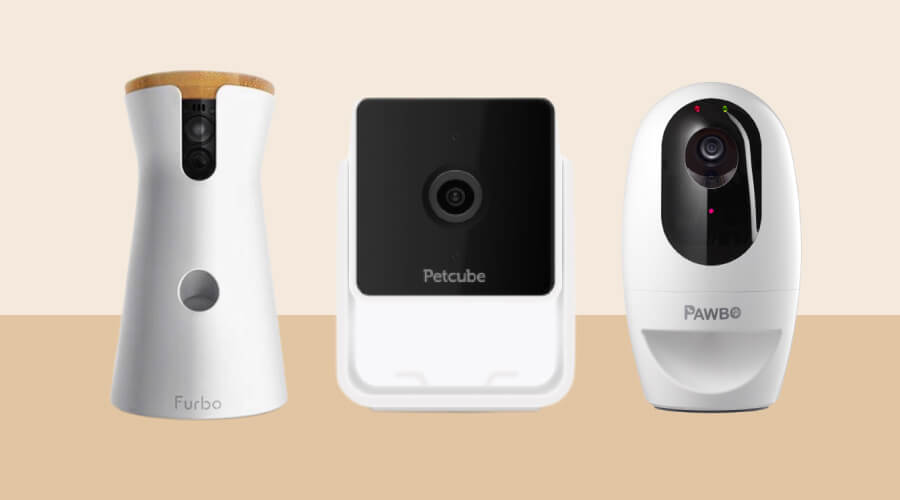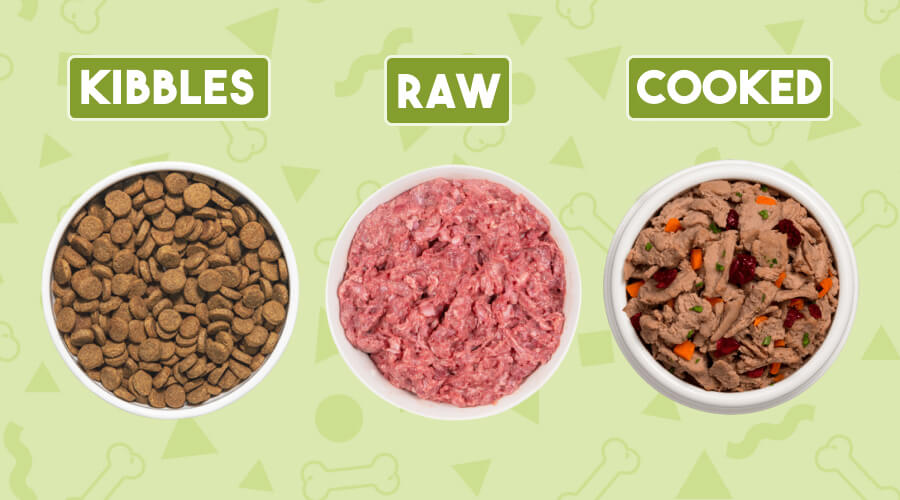Pet insurance is one of the best ways to ensure your pet gets the best treatment possible without burning a hole in your pocket.
While something like a routine check-up may cost $50 to $100, vet treatment may rack up hundreds to thousands of dollars in cost for common ailments like ear infections, skin infections, and dental diseases. The solution?—Pet insurance.
But the question is, which one? Choosing a reliable and trustworthy pet insurance service out of hundreds of different companies can be challenging. So, we’ve put together a list of the 5 best pet insurance companies in Australia.
We’ve shortlisted them based on their popularity, user reviews, coverage, and flexibility.
| Best Customer Service: Bow Wow Meow Best Flexibility: Knose Most Popular: Petcover Best For Senior Pets: RSPCA Best For Young Pets: PetsOnMe |
Best Pet Insurance Companies in Australia
Let’s take a look at some of the most popular and reliable pet insurance companies in Australia.
Knose
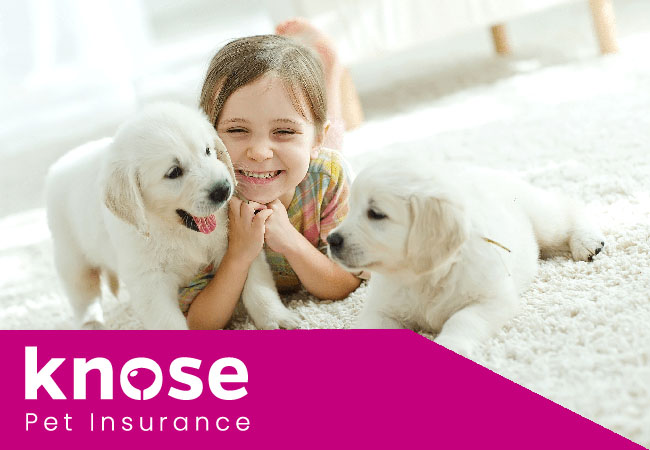
Features:
- Rating: 4.5 stars (>100 reviews)
- Minimum age: 8 weeks
- Claims expiration: 90 days from treatment date
- Claim resolution time: 1-2 weeks
- Max yearly benefit: $25,000
Pros:
- Shortest waiting period for illness coverage
- No sub-limits or hidden costs
- Up to a $25,000 annual limit
- Annual excess, not per claim
- Overseas cover in New Zealand or Norfolk Island
- Efficient customer service (live chat available)
Cons:
- No multi-pet discount
- No GapOnly® (pay total amount upfront)
Knose offers one of the most simple and flexible insurance plans. Essentially, there’s just a single plan available for your cat or dog.
You’ll pick your preferred maximum benefit limit, benefit percentage, and excess. You’ll also have the option to add on cover for dental illness, alternative treatment, and behavioural therapy. All this allows you to tailor your plan based on your pet’s lifestyle and your budget.
Knose also has the highest annual benefit limit on our list. And in comparison to other companies, it offers one of the most affordable policy starting prices for similar coverage.
PetsOnMe
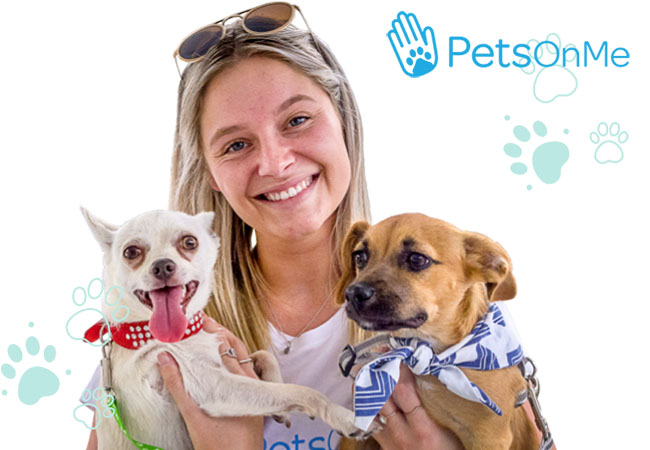
Features:
- Rating: 4.9 stars (Based on >10 reviews)
- Minimum age: 6 weeks
- Claims expiration: 30 days from treatment date
- Claim resolution time: <1 week
- Max yearly benefit: $15,000
Pros:
- Waiting period waived when switching insurers
- Your pet can enrol at 6 weeks of age
- Covers third-party liability
- Multi-pet discount available
- Free for the first 1-2 months
Cons:
- No overseas insurance cover
- Sub-limits apply
- Lowest annual benefit limit
PetsOnMe offers three different plans for your dog and cat, with the most basic one covering only accidental injuries and the other two covering both injury and illness.
The annual benefit limit is fixed for each plan at $5,000, $10,000, and $15,000. However, you can choose the excess ($50, $100, and $150) for any plan you pick.
PetsOnMe offers a 100% benefit percentage, meaning you get the entire vet fee reimbursed, minus the excess. This is especially advantageous for higher-cost vet bills.
Bow Wow Meow
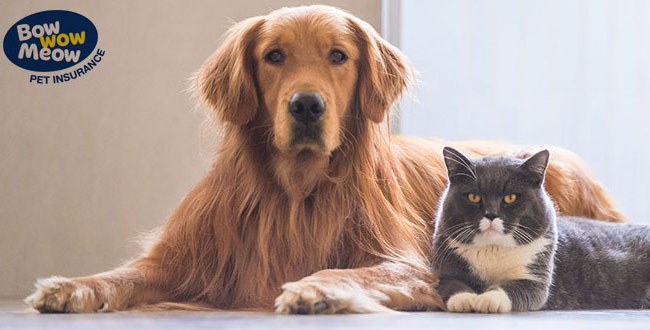
Features:
- Rating: 4.6 stars (>400 reviews)
- Minimum age: 8 weeks
- Claims expiration: Not specified
- Claim resolution time: <1 week
- Max yearly benefit: $20,000
Pros:
- Claims processed on the spot with GapOnly®
- Claims resolved in less than five days
- Overseas cover in New Zealand or Norfolk Island
- $0 excess
- 10% multi-pet discount
- First two months free for puppies and kittens
Cons:
- Sub-limits apply
- Expensive starting premium prices
Bow Wow Meow’s insurance comes with $0 excess, which means you can claim for even the smallest vet bills. You have four options: Accident Plus, Peace of Mind, Ultimate Care, and Indoor cat. Accident Plus only covers accidental injuries (no illness cover). And dental illness coverage is only available under the Ultimate Care plan.
There’s a little less flexibility to tailor most of the plans. You’ll only have the option to pick a benefit percentage of 60%, 70%, or 80% under the Peace of Mind plan. Everything else is fixed.
Bow Wow Meow is widely praised for its excellent and timely customer service, straightforward claim process, and quick claim resolution. They’re partnered with GapOnly®, where your claims can be processed at the vet, and you’ll only need to fork out the gap.
RSPCA
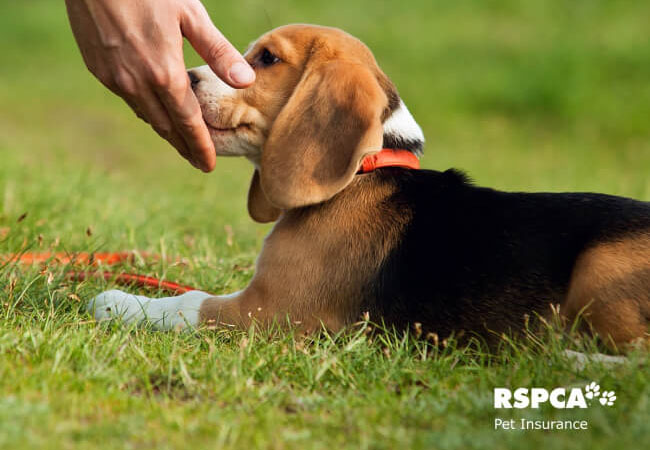
Features:
- Rating: 4.5 stars (>1100 reviews)
- Minimum age: 8 weeks
- Claims expiration: Not specified
- Claim resolution time: <1 week
- Max yearly benefit: $20,000
Pros:
- Claims processed on the spot with GapOnly®
- $0 excess
- Overseas cover in New Zealand and Norfolk Island
- 10% multi-pet discount
- Older pets can be covered for injuries AND illness
- A portion of first-year payments supports RSPCA
Cons:
- Sub-limits apply
- Clunky online system
- Starting premium prices are a little expensive
The Royal Society for the Prevention of Cruelty to Animals (RSPCA) promotes animal welfare in Australia.
There are four plans for you to choose from, all of which cover accidental injuries and illness in dogs and cats. There’s little flexibility offered for each plan since the annual benefit limit and benefit percentage are fixed. However, you can opt to add on routine care.
RSPCA’s insurance allows you to claim even the smallest vet bills, as all plans come with an excess of $0. Claims can be processed directly at your vet with GapOnly®.
If you have a pet above the age of 9, RSPCA is one of the few companies that offer illness and injury coverage for pets of that age.
Petcover (Petplan)
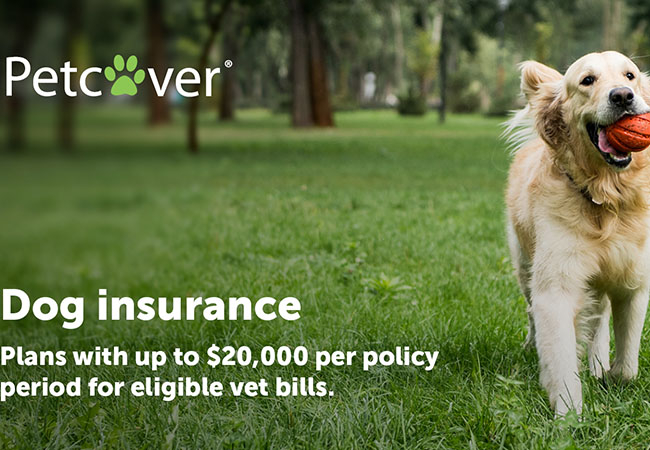
Features:
- Rating: 3 stars (>1100 reviews)
- Minimum age: 8 weeks
- Claims expiration: Not specified
- Claim resolution time: 1-2 weeks
- Max yearly benefit: $20,000
Pros:
- Up to $20,000 annual benefit limit
- Multi-pet discount available (for 3 or more pets)
- Covers cats, dogs, horses, and exotic animals
- Covers third-party liability
Cons:
- High premium increase after renewals (according to reviews)
- Sub-limits apply
- Mixed reviews about customer service
Petcover, which has merged with Petplan, is one of the longest-standing and most well-known pet insurance companies in Australia. They have served over 200,000 Australian pet parents to date.
It is one of the few pet insurance companies offering insurance to horses and exotic pets. You’ll get to choose between nine different plans with various benefits and costs, and some plans allow you to select the benefit percentage and excess per claim.
The massive variety of plans means there’s likely something that fits your preferences and lifestyle. But comparing each one can lead to confusion and decision-fatigue.
How To Pick The Best Pet Insurance In Australia
With the vast number of pet insurance brands available, you may find yourself in a spot picking the best insurance plan that meets your budget and your pet’s needs.
Here are some factors you can keep in mind to help you shortlist your options.
Plan Features
The main features to look out for include the inclusions and exclusions. You’ll also want to consider the annual benefit limit, excess, and benefit percentage. Some plans have these three features fixed, while other plans allow you to tailor them according to your pet’s needs.
Let’s dig a little deeper into what each feature means:
Inclusions and exclusions
- Pet insurance companies usually offer similar inclusions and exclusions. For instance, pre-existing conditions and routine care are typically not covered by pet insurance.
- Some plans only cover accidental injuries, while others cover both accidental injuries and illness.
- Items like dental illness, alternative therapy, and behavioural therapy are only covered in certain plans or available as add-ons. Usually, such features aren’t necessary. But if you have the extra budget to include them, the additional protection and coverage may offer more peace of mind.
- Reading the company’s product disclosure statement or contacting customer service will help you better understand what’s included and what is not.
Annual benefit limit
- Also known as the maximum yearly benefit, this refers to the maximum amount you can claim during a policy year. This will renew after a year has lapsed.
- Pet insurance companies usually offer $12,000 to $15,000. $15,000 is sufficient if your pet does not need any surgery or ongoing treatment for more complicated conditions. If possible, try to go for an annual benefit limit of $20,000, which is a safer bet for when catastrophe strikes.
- A company like Knose allows you to change just the yearly maximum without opting for a more expensive package with extra bells and whistles you don’t need.
Benefit percentage
- The benefit percentage is the percentage of vet bills you can claim, minus the excess (if any). For instance, a benefit percentage of 80% allows you to claim $80 for an eligible $100 vet bill if the excess is $0.
- Most companies offer a benefit percentage of around 70-80%, but a company like PetsOnMe offers 100% (minus the excess). A 100% benefit percentage is usually more advantageous for higher-cost vet bills.
- Some companies, like RSPCA, have a fixed benefit percentage for each plan. Other companies like Knose allow you to choose your benefit percentage without opting for a higher-cost plan with unnecessary benefits.
- Try to go for a benefit percentage of at least 70%.
Excess
- The excess is the fee you’ll need to pay when making claims.
- This could be an annual excess, meaning you’ll only pay once for your first claim in the policy year. Knose offers a yearly excess.
- More commonly, companies utilise a per-claim excess, meaning the vet bill must exceed the excess amount for you to make an eligible claim. This excess will apply to each vet bill.
- You’ll usually see per-claim excess options ranging from $0 to $200.
- An excess of $0 allows you to claim for even the smallest vet bills. But in many cases, this may shoot your premium prices sky-high.
- Since insurance is a safety net for unexpectedly high vet bills, it’s best to go for a higher excess (even though you get less back each time), as your monthly premiums will be much cheaper.
Add-ons
- Many pet insurance companies offer extra add-ons for a slightly higher monthly cost. Common add-ons include behavioural therapy, dental illness, third-party liability, and routine and preventative care.
- Some of these add-ons, such as behavioural therapy and dental illness, may be useful.
- However, routine and preventative care add-ons (health tests, dental cleaning, vaccinations, microchipping, etc.) usually aren’t beneficial. These often come with a very low sub-limit, such as $50 per year, and only allow you to claim for one or two different items each year.
Payments and Costs
Other than the premium cost, payment flexibility is something else to consider. Let’s explore this below:
Insurance premium costs
- Based on starting premium costs alone, some companies offer better value for money for similar coverage. For instance, despite the similar coverage, Knose is considerably cheaper than other companies like Bow Wow Meow and RSPCA.
- Your premium costs will also depend on your pet’s age and breed.
Margin of increase
- Most pet insurance companies, if not all, will typically increase your premium costs over time, even if you have not made any claims.
- Your policy will become more expensive as your pet ages, and reasonably so. But the margin of increase differs from one company to the next. And this makes it hard to determine which company offers the most affordable plan in the long run.
- The best thing to do is to read up on previous customer reviews that include information on the margin of increase with each renewal.
- If you receive a premium increase that doesn’t seem fair, contact their customer service. Don’t be afraid to shop around for other providers, especially if your pet is still young and without any pre-existing conditions.
Payment flexibility
- Many companies allow you to pick between fortnightly, monthly, and annual payments.
- In most cases, you’ll notice that refunds only apply to annual payments.
- Some companies are partnered with GapOnly®. This is an extremely useful feature to look out for. You can get your claims reviewed and processed while you’re still at the vet with GapOnly®, reducing your out-of-pocket expense.
Company Features
Many companies are just different brands that distribute insurance underwritten by the same company—the most popular one being Hollard. Despite that, not all insurance companies provide the same quality of services.
We’ll review some of the most important company features to look out for when making your choice:
Claims resolution waiting time
- Typically, companies take 1-2 weeks to process most claims.
- Some companies, like RSPCA and Bow Wow Meow, are exceptionally efficient at processing claims, with the majority of claims being resolved in less than a week.
Waiting period
- The waiting period is the period of time after purchasing a policy when you are not allowed to make any claims.
- Any illnesses that arise during this period are usually considered pre-existing conditions.
- Companies offer a waiting period of around 14 to 30 days for common illnesses, while specific conditions like cruciate ligament conditions usually have a waiting time of 6 months.
- Knose lands at the top of our list with a waiting period of just 14 days for illnesses, while Petcover has a waiting period of 21-30 days for illnesses.
- Some companies like PetsOnMe allow you to waive the waiting period when switching over from another insurer.
Refund policy
- Most companies allow you to cancel at any time, but it’s best to read up on their cancellation policy before doing so.
- Refunds usually only apply to annual payments and if no claims are made.
- The cooling-off period is the period of time from the date you purchase a policy when you are entitled to a full refund (minus taxes, duties, and other non-retrievable expenses) if you choose to cancel the policy.
- Companies typically offer a cooling-off period of 21 to 30 days.
Eligibility assessment
- Most brands usually share similar eligibility criteria.
- Petcover is the only pet insurance company on this list to offer pet insurance for animals other than cats and dogs, such as horses and exotic animals.
- RSPCA is the only company on our list whereby pets above 9 are eligible to start an insurance plan coveringillness and injuries.
Customer service
- How quickly and efficiently customer service teams respond to your queries and concerns is an essential factor that shouldn’t be overlooked.
- Some companies, like Knose, have a live chat feature, where a service staff responds within minutes.
- Cheapest doesn’t always equal best. How the company handles your claims and concerns can often make or break your experience.
Tips For Buying Pet Insurance In Australia
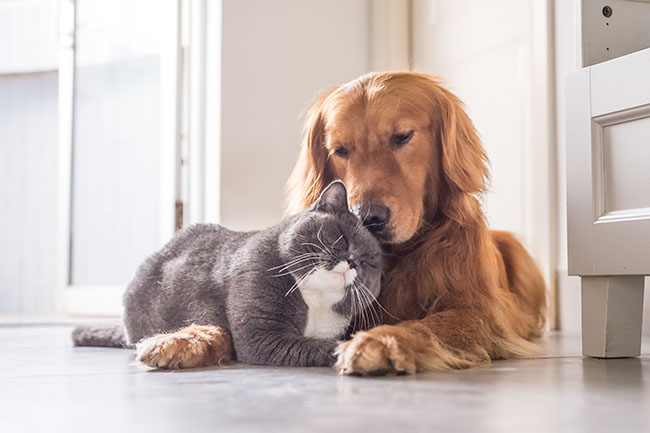
When shopping around for pet insurance, here are some tips to get you the best value for your money.
1. Read previous customer reviews.
There’s so much fine print to read that many important pieces of information are often overlooked. Looking through third-party review sites like ProductReview.com.au or TrustPilot is one of the most time-efficient ways to find out a company’s best (and worst) features.
Previous user reviews usually also give valuable information about policy renewal price increases, quality of customer service, and actual claim reimbursement times.
2. Get quotes from different companies.
Don’t be afraid to shop around. Compare the quotes and benefits offered by various companies, and shoot the customer service team questions if you have any.
Widening your horizons often means that you’ll find the best-suited plan for yourself. Some companies offer well-tailored plans for unique circumstances. For instance, Bow Wow Meow has a plan tailored for
indoor cats. This plan does not offer unnecessarily high limits or coverage and is much cheaper.
3. Use the same provider for multiple pets.
Many companies offer multi-pet discounts, usually for 2 (sometimes 3) or more pets. The discount rate is commonly 10%, so you could save quite a bit over the years.
4. Don’t wait too long.
The older your pet, the higher the starting premium costs. In most cases, insuring your pet earlier on will add up to a much cheaper total sum paid in the long run, rather than starting only when your pet is older.
Many insurance companies do not cover pets above the age of 9 for illnesses, and even if they do, more stringent limits apply. Plus, pre-existing conditions are not covered. Hence, insuring your pets when they’re young and healthy means your pet will be covered for most future illnesses and conditions that arise.
How Does Pet Insurance Work?
Pet insurance is an insurance policy that reimburses you for certain vet expenses. You’ll take your pet to the vet and pay for any bills before submitting a claim for reimbursement, and you’ll then wait for the agreed percentage of your claims to be reimbursed by the company.
Most pet insurance plans generally cover unexpected accidents and injuries, surgery, medications, and diagnostic tests. Many companies also cover congenital and hereditary conditions, but not if they have already been diagnosed or detected before your policy start date.
What about routine or preventative care?
Routine and preventative care isn’t usually covered in the base plan. However, many companies offer the option of adding routine and preventative care for a higher monthly premium.
In most cases, getting this add-on isn’t worthwhile. You’re better off saving a small sum of money in an envelope for routine check-ups, tests, dental cleaning, vaccinations and one-time procedures like desexing.
When should I get pet insurance?
The earlier, the better. The typical minimum age for enrolment is 8 weeks old. But PetsOnMe allows pets as young as 6 weeks to enrol.
Insuring a younger pet is usually advantageous simply because companies do not cover pre-existing conditions. Younger pets are less likely to have an illness. But if they develop them later, these conditions will be covered.
Can an old pet be insured?
Yes, an old pet can be insured, but many companies cap the maximum age at 9 years for illness and injury cover.
RSPCA is one of the few that allow pets above 9 years of age (and under 16) to be enrolled for both illness and injury cover. Other companies may offer cover for pets above 9 years of age, but only for accidental injuries.
You’ll also notice more stringent sub-limits and more limited coverage and benefits for such plans.
Pet Insurance Costs
Pet insurance costs will depend on various factors, and the costs can vary wildly. Dog insurance may cost anywhere between $200 to over $1000 per year. But you’ll be able to find a decent plan for a young dog at an annual cost of around $400-500 for illness and injury coverage. Cat insurance is cheaper, and a reasonable plan costs about $200-300 a year for a young cat.
Insuring an older pet is much more expensive. For instance, a cheaper plan for a 5-year-old dog costs about $600-700 a year. But you can expect prices of over $1000 annually to insure dogs of this age for both injuries and illness.
These estimates are the premium starting costs. As your pet ages, the premium prices will increase. The good news is that many companies offer multi-pet discounts. In the long run, this adds up if you insure two or more pets under the same provider.
Pet Insurance Claims
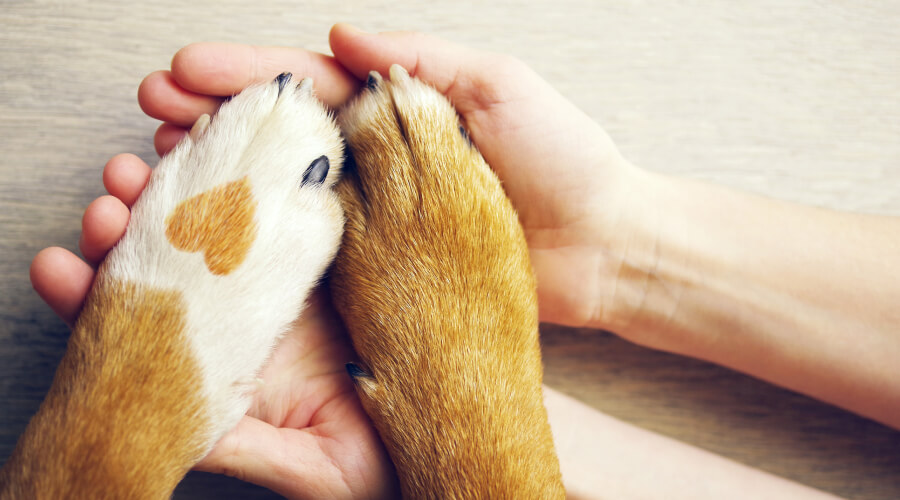
At some point in time, you’d likely need to know how to make a claim. Some vets may help you handle your insurance claims, but it’s best to get a good idea of how the process works.
Since most companies operate on a reimbursement scheme, you’ll typically make the full payment at the vet and then make a claim to have a portion of it reimbursed.
However, some vets and pet insurance companies are partnered with GapOnly®, allowing you to have your claims processed directly at the vet. You’ll only need to pay for the gap (the portion not covered by insurance), which reduces your out-of-pocket expense.
How are claims made and reimbursed?
Claims are typically made online, and most companies have an online portal or form that allows you to submit your claims with any necessary supporting documents.
Alternatively, you may be able to have your claim form sent via post to the company’s address.
Most providers will have the reimbursed amount transferred directly to your bank account. However, some may offer the option to have the vet paid directly upon your request.
Do all vets accept pet insurance?
The way pet insurance works is based on a reimbursement model. You pay the vet first for any treatment and then make a claim. Your pet insurance provider will then pay the reimbursed amount directly to you. This means that you can typically use pet insurance for any registered vet of your choice in Australia.
Whether the vet offers to help you submit claims or allows them to be processed via GapOnly®—that’s a different story. Not all vets will handle the insurance paperwork for you, and GapOnly® is only partnered with certain vets across Australia. You can always call up a vet to inquire about this.
Is Pet Insurance Worth It?
This really depends on your situation and your pet’s lifestyle.
Pet insurance is likely worth it if:
- Your pet is still young and healthy.
- Your pet has no pre-existing conditions.
- You do not have the capacity to cover an unexpected and large vet bill.
- You appreciate having that peace of mind.
- Your pet has a higher risk of illness or injury.
Say your pet’s breed is known to be more susceptible to illness, or let’s say, you live right by a busy street. In such cases, getting pet insurance is definitely something to consider.
Pet insurance is less likely to be worthwhile if:
- Your pet is much older.
- Your pet has a pre-existing condition(s).
- You’re able to afford a large vet bill in the thousands.
Final Takeaway: Getting Pet Insurance In Australia
As pet parents, we never want to be placed in a tight spot having to choose between cost savings and our pet’s wellness. And that’s where pet insurance comes into play.
Vet bills for unexpected illnesses and injuries can cost thousands. If you have a young and relatively healthy pet, it’s best to consider getting insurance to safeguard their wellness. The cheapest company isn’t always the best. Read up reviews on the company’s claim resolution time, customer service, and claim process. Understandably, taking care of an ill pet is stressful, and you don’t want an unreliable insurance service and complicated claim process to add to that.

